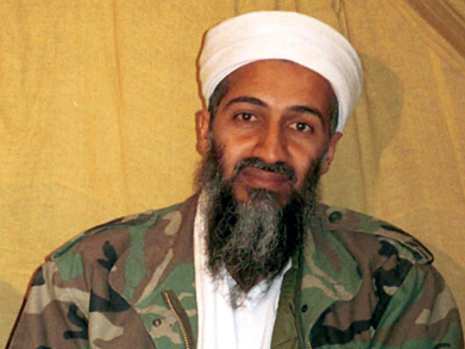Because of E's time in afghanistan, he was familiar with the country.
由于E曾在阿富汗待過,所以薩特對阿富汗很熟悉。
One of his closest contacts was a senior intelligence officer for the Northern Alliance,
他關系最密切的聯絡人之一是北方聯盟的高級情報官員,
a group at war with the Taliban for control of the country in the wake of the Soviet withdrawal.
北方聯盟是蘇聯撤軍后,為取得國家控制權與塔利班作戰的組織。
Moscow was the Alliance's chief source of arms,
北方聯盟的主要武器來源于莫斯科,
and this contact—I'll call him "Hamid"— frequently traveled back and forth to Russia.
而我稱之為“哈米德”的這位聯絡人,經常往返于俄羅斯。
During the Soviet occupation, the U.S. had supplied stinger missiles to rebel groups fighting the Red Army.
在蘇聯占領阿富汗期間,美國曾向與紅軍作戰的叛軍提供毒刺導彈。
Once the USSR pulled out, however, American policy eventually changed;
然而,蘇聯一撤退,美國政策最終也隨之改變;
it became clear that jihadi groups, including Al-Qaeda, might use the missiles for terrorism.
顯而易見,包括基地組織在內的圣戰組織可能會將導彈用于恐怖主義。
In 1995, President Bill Clinton signed an executive order
1995年,比爾·克林頓總統簽署了一項行政命令,
to round up as many of the stingers as possible in Afghanistan.
即在阿富汗盡可能多搜集毒刺導彈。
Both Hamid and E knew what Sater was doing, who he was working for.
哈米德和E都知道當時薩特在做些什么,以及為誰做。
And for the right price, they offered to help the Americans reacquire some of the missiles.
為拿到一個公道的價格,哈米德和E提出幫助美國搜集導彈。
Sater relayed this message to Blane, who asked for proof.
薩特把此事轉告給布萊恩,布萊恩要求提供證明。
The Afghan sent photos of the serial numbers of the stingers, paired with the same day's newspaper.
阿富汗人哈米德把毒刺導彈的序列號照片,裹挾著當天的報紙一同寄給布萊恩。
Impressed, Blane turned the matter over to the CIA,
令人印象深刻的是,布萊恩把這件事交給中央情報局處理,
which was tasked with collection,and the agency began negotiating to buy back the missiles.
中情局的任務是收集情報,然后中情局開始談判回購導彈的事。
Sater then began dealing with Langley.
薩特隨后開始與總部位于蘭利的中情局打交道。
(He believes his information helped the agency recover at least some of the missiles, but he can't say for sure.)
(薩特認為他提供的信息至少幫助中情局收回了部分導彈,但他也沒有十足的把握。)
Late in 1998, Sater got a call from an FBI agent in New York named Leo Taddeo,
1998年末,薩特接到聯邦調查局探員里奧·塔迪歐從紐約打來的電話,
who told him about an investigation into the pump-and-dump operation on Wall Street that Sater had left behind,
里奧·塔迪歐告訴薩特,自己正在調查華爾街那家薩特之前待過的拉高出貨的公司,
part of a broader probe into the Italian Mafia's expanding presence on Wall Street.
這是對意大利黑手黨在華爾街擴張調查的一部分。
The FBI had some dirt on Sater,
聯邦調查局掌握了薩特的一些丑聞,
who had gotten involved with two Brooklyn mob members—
說薩特與兩名布魯克林黑幫成員有勾連,
"guys whose job it was to keep other mobsters away"—
而薩特表示“這兩個人的工作就是把其他黑幫分子趕走”,
before he went to Moscow, and Taddeo told him he was likely to be charged with fraud.
在薩特去莫斯科之前,塔迪歐就告訴他可能會被指控欺詐。
If he came back and cooperated, a judge would take that into account at sentencing.
如果薩特回來配合,法官會在判決時考慮到這一點。
(A former FBI official in New York says Sater's story is accurate.)
(一位前紐約聯邦調查局官員表示,薩特的說法準確無誤。)
Sater agreed to return to the states.
薩特同意回到美國。
He then called E and told him what was going on,
之后他打電話給E,告訴E發生了什么,
and the former intelligence official asked him to delay the trip, not saying why.
這位前蘇聯情報人員讓薩特推遲這次行程,并未說明原因。
Two days later, E provided Sater with a packet of information from his Afghan contact, Hamid.
兩天后,E向薩特提供了從阿富汗聯絡人哈米德那兒得到的信息。
It included numbers for the satellite phones used by a man then living near the Afghan border with Pakistan:
其中包括一名當時住在阿富汗與巴基斯坦邊境附近的男子使用的衛星電話號碼,
Osama bin Laden, the leader of Al-Qaeda,
這名男子就是基地組織頭目奧薩馬·本·拉登,
the jihadi group that had just bombed the U.S. embassies in Kenya and Tanzania.
本·拉登領導的圣戰組織剛剛轟炸了美國駐肯尼亞和坦桑尼亞大使館。
(A former CIA officer familiar with Sater's story says the agency came to believe the numbers were authentic.)
(據一位了解薩特生平的前中情局官員稱,中情局相信了這個號碼是真的。)
When Sater arrived back in the U.S. in late 1998,
1998年底,薩特回到美國,
he met with Jonathan Sack, the assistant U.S. attorney in New York's Eastern District,
會見了紐約東區助理檢察官喬納森·薩克,
who was handling the stock fraud case.
當時這位檢察官正在處理涉及薩特的股票欺詐案件。
Sater told him what he had been doing in Moscow,
薩特把自己在莫斯科的所做作為告訴了這位檢察官,
and the CIA and DIA backed up his claims.
中央情報局和國防情報局證實了他的說法。
Both agencies wanted their asset sent back to Moscow, but Sack was unmoved.
這兩個機構都想把對他們有用的薩特送回莫斯科,但是薩克無動于衷。
And Sater was mystified.
而薩特困惑不解。
"So I'm giving the CIA bin Laden's sat phone numbers," he tells me,
“所以我把本·拉登的衛星電話號碼給了中央情報局,”薩特告訴我,
"and this guy (Sack) is more concerned with going after 'Vinny Boom Botz.'"
“'Vinny Boom Botz'之后(薩克)這個家伙更加關心我的去向。”

Sater pleaded guilty to fraud and agreed to help the feds with the stock case.
薩特承認犯有股票欺詐罪,并同意配合聯邦調查局調查這起股票案件。
"I did 10 or 15 debriefings," he says.
“我匯報了10到15次,”薩特說。
"They ended up satisfied."
“他們最終滿意了。”
Sack agreed to delay his sentencing.
薩克同意推遲宣判。
Clinton that summer had ordered an airstrike on Al-Qaeda training camps in Afghanistan,
同年夏天,克林頓下令對阿富汗的基地組織訓練營進行空襲,
based in part, former CIA sources say, on information Hamid had passed on.
據前中情局人士稱,空襲部分基于哈米德傳遞的信息。
"(The CIA) really wanted me to go back (to Moscow) at this point," Sater says.
薩特說:“(中情局)當時真的希望我能回到(莫斯科)。”
But Sack and the FBI still wouldn't allow it.
但是薩克和聯邦調查局仍不允許薩特回去。
In late 2000, as Sater helped the feds take on the mob, he also tried to make some money.
2000年末,薩特幫助聯邦政府對付暴徒,他還試圖賺些錢。
He joined a real estate business—Bayrock—and the company managed to get a few deals, he says.
他說他加入了一家房地產公司——貝羅克集團,并設法達成了幾筆交易。
His work as a government informant was equally fruitful.
他作為政府線人的工作同樣富有成效。
Two FBI sources say Sater’s cooperation would eventually help turn Frank Coppa, a captain in the Bonanno crime family, into a cooperating witness
據聯邦調查局的兩名人士稱,薩特的配合最終幫助博南諾犯罪家族的上尉弗蘭克·科普帕成為聯合證人,
against the mob organization.
以對抗黑手黨組織。
"A real turning point in the war on the Mafia," a source says.
“這是打擊黑手黨戰爭的真正轉折點,”一位消息人士說。
Eventually, his cooperation on the stock scams helped the feds get 19 guilty pleas, according to Sater and law enforcement officials.
根據薩特和執法官員的說法,最終,他在調查股票欺詐案件上的配合幫助聯邦調查局獲得了19項有罪答辯。
That figure seemed significant at the time,
這個數字在當時似乎很重要,
and Sater says he "hopes" it helped atone for his crimes.
薩特說他“希望”這個數字有助于彌補他的罪行。
But the Mafia cases would turn into an afterthought compared with his next role—one that was even more improbable.
薩特的下一個角色更加不可思議,與下一個角色相比,黑手黨的案子就不算什么了。
譯文由可可原創,僅供學習交流使用,未經許可請勿轉載。


